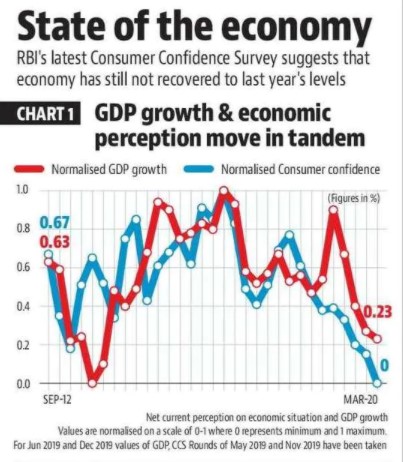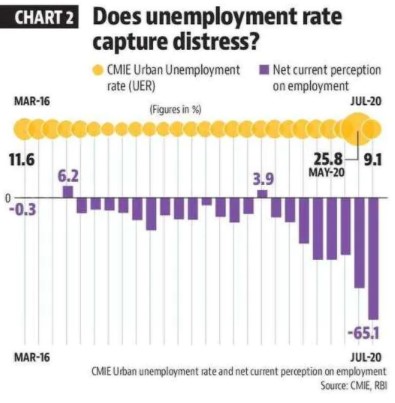Focus: GS-III Indian Economy
Why in news?
- Most high frequency indicators suggest a sequential recovery until June 2020, with a flattening in July.
- The latest Consumer Confidence Survey (CCS) of the Reserve Bank of India shows that people believe that the economic situation was much worse in July than in May when compared to year-ago levels.
- This suggests that India’s GDP might remain in contraction mode in the September quarter.
- The CCS also suggests that some key high frequency indictors might not be capturing the actual magnitude of distress.
Significance of CSS
- A comparison of current perception on general economic situation in the CCS along with quarterly GDP figures shows that they have pretty much moved in tandem.
- This suggests that there is a high probability that the unprecedented collapse in May and July CCS might reflect in GDP numbers as well.
- Interestingly, the CCS response on employment does not seem to be in sync with the only monthly indicator of unemployment rates available in India, which are collected by the Centre for Monitoring Indian Economy (CMIE).


Does the CCS not capture the reality of the labour market?
A research note says that while unemployment rates might come back to normal, wage outlook could be dimmer than in the pre-pandemic world.
Reasons:
- More jobs being generated in the rural areas where wages are lower.
- A second-round-pandemic-led global weakness in labour markets due to job losses in the first round.
- Expectations of lower economic growth, an important driver of wages.
-Source: Hindustan Times




